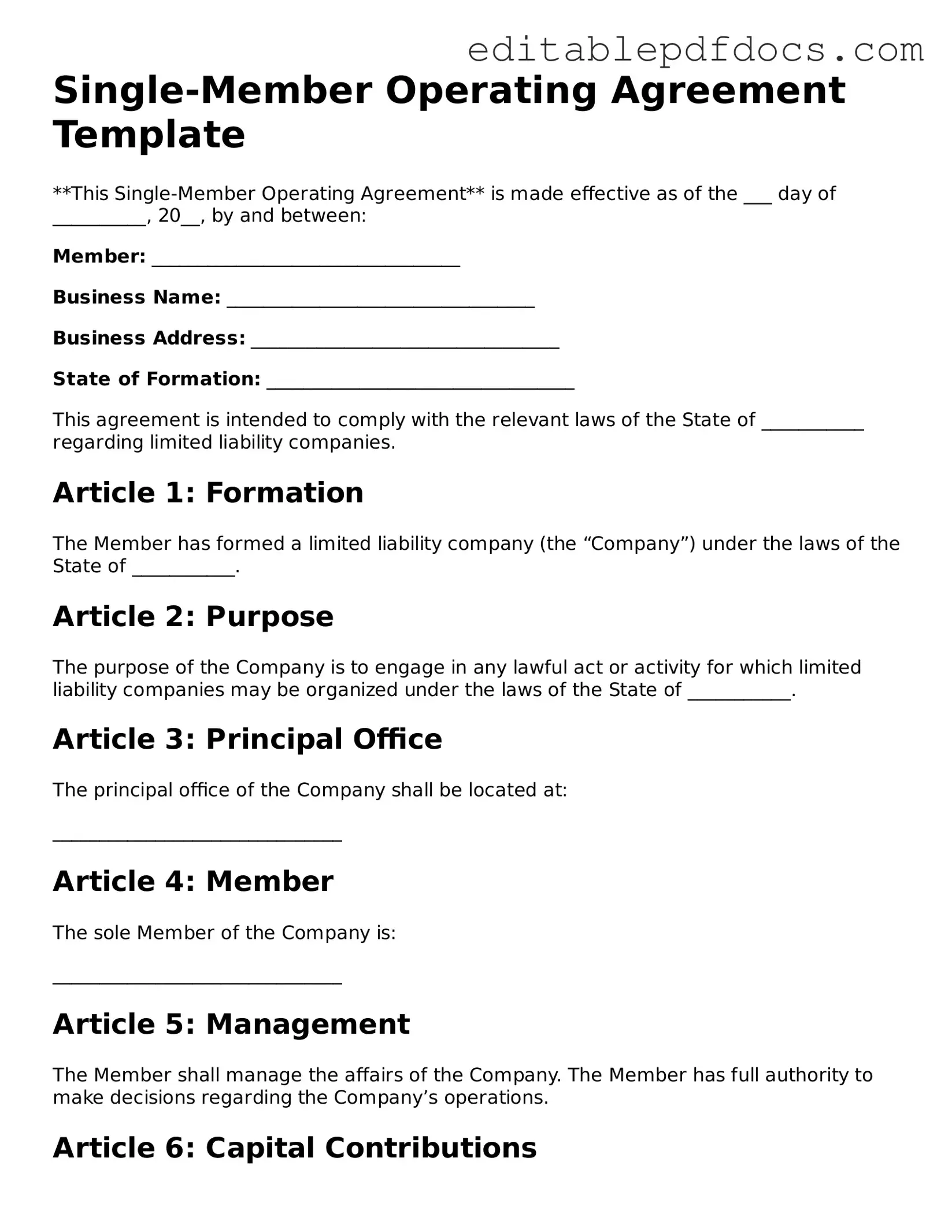Filling out a Single-Member Operating Agreement form can seem straightforward, but many people stumble over common mistakes that can lead to complications down the road. One of the most frequent errors is neglecting to include essential details about the business. For instance, failing to state the business name or its purpose can create confusion and might lead to issues with compliance or legal recognition.
Another common mistake is not specifying the ownership structure clearly. While it may seem obvious that you are the sole owner, explicitly stating this in the agreement reinforces your position and avoids potential disputes in the future. Additionally, some individuals overlook the importance of including the date of formation. This date is crucial for establishing timelines and ensuring that all legal requirements are met from the start.
Many people also forget to outline the management structure of the business. Even as a single-member entity, it’s important to clarify how decisions will be made. Will you operate independently, or will you involve others in decision-making processes? Clearly defining this can help prevent misunderstandings later on.
Another pitfall is not addressing the financial aspects of the business. Failing to outline how profits and losses will be handled can lead to confusion when tax time rolls around. It’s essential to specify whether you plan to reinvest profits back into the business or distribute them to yourself.
Some individuals may skip the section on amendments, thinking that their initial agreement will never need changes. However, businesses evolve, and having a clear process for making amendments can save time and headaches in the future. It’s wise to include a simple clause that outlines how changes can be made to the agreement.
In addition, many overlook the importance of signing and dating the document. An unsigned agreement can be deemed invalid, leaving your business vulnerable. Ensure that you not only sign but also date the agreement to provide a clear record of when it was executed.
Finally, some people fail to keep a copy of the completed agreement. Once the form is filled out, it’s crucial to store it in a safe place where it can be easily accessed. This document serves as a foundational piece of your business structure, and having it readily available can help in various situations, from banking to legal matters.
By avoiding these common mistakes, you can create a robust Single-Member Operating Agreement that supports your business goals and protects your interests. Taking the time to carefully fill out this form can pay off significantly in the long run.
